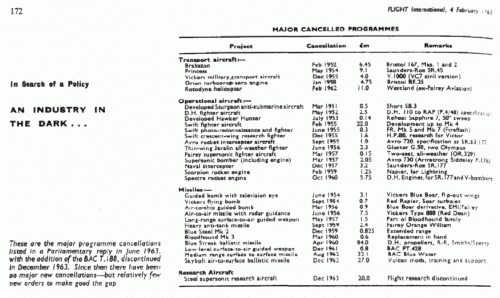Take the RAF in the early 60s and the two big combat aircraft programmes initiated then, TSR-2 and P.1154, requirement for both was approximately 150, by comparison the original requirement for the F-105 Thunderchief programme (prior to it being swapped for the Phantom) was for roughly 1,500 aircraft- 10 times the requirement of any single British programme. Even in Sweden SAAB delivered over 300 Drakens over the course of the programme.
The original RAF V-Bomber plan was for 240 operational aircraft in 30 bomber squadrons, 2 recce squadrons and 1 special ELINT/EW squadron (later scaled back to 180 aircraft in 23 squadrons), for this force no less than 7 bomber aircraft were prototyped and/or procured (Sperrin, Valiant Mk1/Mk2, Vulcan Mk1/2, Victor Mk1/2), 8 if one includes the Avro 730 on which work was apparently started prior to cancellation- all in a period of barely 10 years, then add the multitude of fighter projects on top of that; Hunter, Swift, DH110, Scimitar, SR.177, Supermarine 545, Javeline, thin-wing Javeline, Lightning, F155T, Sea Vixen, Supermarine Type 556, not to mention the multifaceted guided weapons programme.


